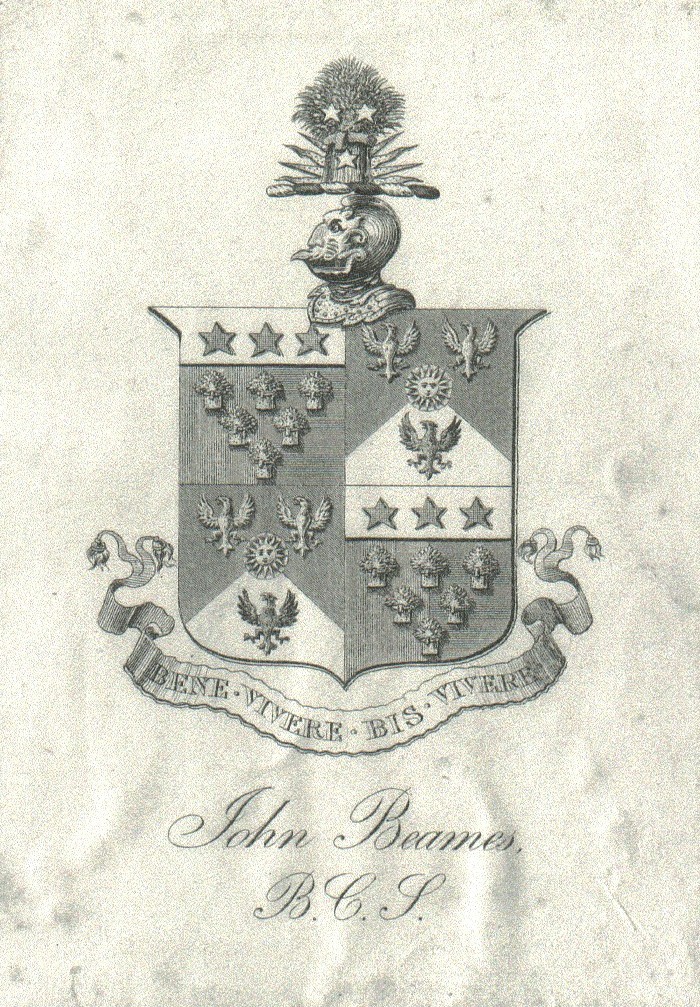
Beames Quartering Carnarvon
When two armigerous people marry the armorial shields they have been using as single people are amalgamated to reflect the marriage.
The most usual arrangement is called impaling, that is, the new shield is divided vertically through the centre: on the right of the shield are the arms of the husband and on the left those of the Wile. (A shield is always described by reference to the man holding it in front of himself, so the right of the shield means the side on your Left as you face it.)
There is a different arrangement if the wife is an heiress. The most obvious example of an heraldic heiress is an only child whose father has died; and that applied to Mary Carnarvon. Instead of the two shields being impaled, the wife's arms are shown on a small shield in the centre of the husband's. The smaller shield is called an inescutcheon of pretence - the last word having the neutral sense of a claim without any implication of falsehood!
You cannot inherit the right to bear arms from a woman - only from a man - but the design of the arms you bear may be strongly influenced by women among your ancestors. In this instance the transmission of the Carnarvon arms to the future has got to be in association with the Beames arms. But, of course, the arms of John and Mary must go forward in a different way from that which applied while those two were living.
That is done by the next generation quartering the arms. That is, the shield is divided into four. In the first quarter (top right to the shield bearer: top left as you see it) are put the arms of father's family and in the second quarter the arms of mother's. The other two quarters arc filled similarly but in reverse order.
The Beames/Carnarvon arms arrangement is slightly out of the ordinary in that the Carnarvon arms were not inherited by Mary but granted directly to her. But the outcome would have been exactly the same if the arms had been granted to her father after his death (a perfectly possible arrangement in Scotland and I expect in England).
When an heiress marries it is not usual to change the husband's crest or motto and no change has been made here.
(per George Henry Garfield Tilling - July 2001)